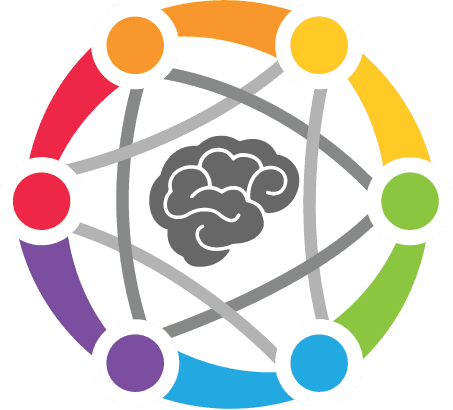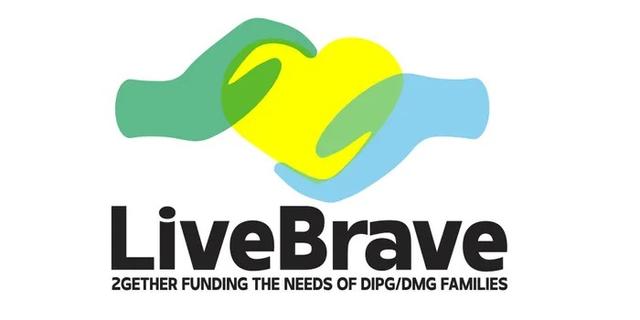Clinical Trials Using Precision Medicine
In rare cancers like DIPG DMG where the standard of care is not usually sufficient to cure the cancer, entering a clinical trial may feel more like a necessity than an option. Joining a clinical trial can at times be challenging. It requires planning and advocating for your loved one. Armed with the mutation information from your loved one’s biopsy, you are in the best position to choose clinical trials. Always have a plan, and a backup plan, as trial options change often.
Using Precision Medicine
Over the last decade, the entire field of precision medicine has exploded. Patients began putting their clinical, genomic and imaging data all together allowing researchers to see which mutations were most prevalent in certain tumor types. Since then, the field of research has worked to identify mutational targets to restore, destroy, silence, or amplify. This is considered precision medicine, as one tumor is often not like the others.
However, unlike adult gliomas, the genomic sequencing of pediatric tumors is very similar with relatively few predominant mutations. For example, 80% of DIPGs have a H3K27m mutation. This H3K27m mutation disregulates chromatin activation. While our genes have full sets of instructions, not all instructions are used all the time. The H3K27m mutation causes certain instructions to be muted, remaining turned off and allowing the tumor to grow uninhibited This mutation is the DIPG DMG tumor’s instigator that starts the tumor growing. When coupled with a TP53 or RB1 mutation, which when working are tumor suppressor cells, the brakes are off and the gas is on for full speed tumor progression. Yet, it doesn’t have to be the case.
Knowing what we know now, could we turn the histone back on to restore function? We are getting closer. Each year researchers add chapters to the knowledge we have about DIPG DMG. With artificial intelligence and advanced learning models, knowing your loved one’s tumor characteristics has never been more important.
Understanding Common DIPG DMG Genomic Mutations
As the cancer progresses, the cells acquire secondary mutations which cause the DIPG cells to react differently from normal cells. Scientists are just learning which sub mutations form as a result of each main mutation and how to intercept their formation. The changes in RNA, loss of methylation and creation of proteins of the tumor help to understand how the tumor begins, grows, communicates with healthy cells, and responds through its cell life cycle stages. Multiomic information tells us a great deal about the tumor.
Families who chose to donate CNS tissue and share their loved one’s biopsy findings and patient records made these discoveries possible. Each year researchers are adding chapters to the knowledge we have about DIPG DMG. Based on their research, the more information you have about your loved one’s tumor, the more opportunities you have to use tumor boards, xINFORM, and other assistance to compare your loved one’s tumor to all other patients’ data. This can help you better predict which trials or treatment may provide your loved one the greatest benefit. We still have so much to learn about DIPG DMG and how to treat it, yet more than ever, successful clinical trials are nearly within reach.
Choosing a Clinical Trial
You may really feel overwhelmed with the options and lack of published trial response information on these primarily Phase I trials. It may help you to understand what the “phases” of a clinical trial mean. Generally, a phase I clinical trial intends to learn whether the treatment or drug can reach the tumor. A phase II trial is testing whether the drug or other treatment is safe, without toxicity or dose limiting side effects. In this phase, the dose will increase generally in groups of three patients at a time until toxicity occurs. Finally, a phase III trial seeks to learn whether the drug or other treatment will reduce or eliminate the tumor, increase the overall survival of the patient or improve the patient’s quality of life. Most DIPG DMG trials are Phase I or Phase II clinical trials with small patient groups.
After evaluating, make the decision that is best for your family. No trial can guarantee you a successful outcome, but some in Phase II or III will have gathered enough data from participants to have insights into the effectiveness for particular tumor genomic mutations or other tumor attributes. Knowing your tumor will help you decide which trial is right for you. For a comprehensive list, start with clinicaltrials.gov.
Clinical Trials Require Being Flexible
We wish there was an easy path to learn every trial your loved one may qualify to enter and its status. It should be easier. You, like many families, may feel most anxious when your child is between trials without a treatment plan. For this reason, as you investigate clinical trials, make a first choice as well as one or two back up plans. Some times the trial you want will be on pause, and not enrolling. There might be criteria that excludes your child such as age, circumference of skull, or use of steroids. Here are some things to consider as you form your plan:
Is the trial active, or is it on hold and not currently starting new patients in treatment?
What have other patients experienced in the trial and on what arm of the trial, as there will be variations in every trial?
What actions might exclude your loved one from the clinical trial? For instance, in some trials, using cannabis or supplements might disqualify a patient. In others, prior chemotherapy or a shunt placement might prevent enrollment.
Are you willing to travel or live away from home for the trial if required?
To help chart your course, with information that is more up-to-date than clinicaltrials.gov, use My DIPG Navigator, the DIPG DMG National Brain Tumor Board, and xINFORM’s report for your loved one. Your doctor, the DIPG DMG National Brain Tumor Board and My DIPG Navigator nurses can also explain all options to you.
Creating a Clinical Trial Plan
Once you have decided on your top choices, it is time to advocate for your loved one by reaching out to the primary hospitals offering your chosen clinical trial. You can learn more about which clinical trials sites have openings by proactively using the My DIPG Navigator, the DIPG DMG National Brain Tumor Board, xINFORM, clinicaltrials.gov and the knowledge of other families within the Tough2gether Online Community.
It will help you to know the terminology for eligibility. Trials for “newly diagnosed” patients generally require entry to the clinical trial within the first 12 to 16 weeks after diagnosis, but read the fine print. Newly diagnosed criteria may require a biopsy, or may require enrolling before radiation. Alternatively, it may require enrolling two to twelve weeks after radiation. Typically, if the tumor has grown more than 25%, which is called progression, during the newly diagnosed period, your loved one may be excluded. Do your best to learn the eligibility rules for clinical trials you are most interested in as quickly as possible. Many will not allow patients who are in progression or have had reirradiation to participate. One mistake families often make is choosing to wait after radiation until the tumor does progress to enter a clinical trial. Unfortunately, at progression the options for clinical trials are more limited.
Should your loved one not be eligible for clinical trials, there are limited compassionate use treatment options as well as “off trial” drug uses available in some cases. My DIPG Navigator and the DIPG DMG National Brain Tumor Board can help you identify and advocate to receive these options. xINFORM uses its patented technology to scour research and trials for all available options for your loved one. There are many members of the Tough2gether online community ready to help or to support you during the part of your journey.
Helpful Tips from Families
- Stay in touch often with your My DIPG Navigator nurse to receive trial updates.
- Know the location of your child’s tumor within the pons or brainstem, know the mutations found in the biopsy and any other characteristics important for clinical trial consideration to discuss with trial sites you contact.
- Engage with your doctor often to discuss clinical trials, informing your doctor of your desire to be considered with any travel limitations known.
- Take part in conversations within the Tough2gether Online Community for updates and family reported responses to trials, but realize it takes a number of patients in a trial to create trends in responses.
- Continually prepare financially. Seek assistance from Live Brave 2gether and other foundations when you need it to be able to travel, take off work or live away from home to enter a clinical trial you choose. Ask your hospital social worker to help you apply for social security disability, medicaid or supplemental medicaid and any caregiver benefits in your state before traveling for a trial whenever possible.
- Form a back up plan in case your loved one is not eligible, the trial ends or your loved one is released from the clinical trial due to response, side effect or tumor progression. It helps to always have a first, second and third choice ready.
- Should that happen, you can be prepared with a compassionate use drug or treatment option for which individual approval may be required. For these reasons, do your homework and be ready with your 1st, 2nd and 3rd choice in clinical trials.
- Be easy on yourself. Giving your loved one your time, love and constant support is the best thing you can do. Remember, no clinical trial can guarantee a proven result. You should not blame yourself for anything that happens based on your choice of whether to enter a trial or which trial to enter. You are doing your very best.
Resources To Help You Plan

xINFORM
xINFORM stands ready with a well-recognized system to compare your patient data, as you receive it, with other DIPG DMG patients’ data and published research relevant to your tumor. Use xINFORM to assist in the decisions for treatment you will make.

DIPG DMG National Brain Tumor Board
Receive a second opinion for treatment unique to your tumor from a national panel of leading pediatric neuro-oncologists, neuroradiologists, genomics experts, and neurosurgeons selected from centers of excellence across the country.

CBTN
Children’s Brain Tumor Network is a federated data and tissue repository partnering with centers of excellence throughout the world to receive patient data and tissue of pediatric brain tumor patients. By collaborating, researchers using CBTN data can often accelerate discoveries in their work for a cure.

My DIPG Navigator
Connect with nurses with years of experience in pediatric oncology to help you better understand the diagnosis and treatment options, connect you to the proper resources you need, and support you throughout your fight.

Live Brave 2gether
We know that in addition to worries about your family member, there are financial worries that accompany a diagnosis of DIPG or DMG. Live Brave 2gether is founded by families who understand and help find options to relieve the inevitable financial strain.

Tough2gether Online Community
During your fight, you may want to connect with other families going through this battle, learn what resources other parents found helpful or share those helpful to you. Join a private DIPG DMG community founded by DIPG DMG parents.